Madrid was the first stop.
|
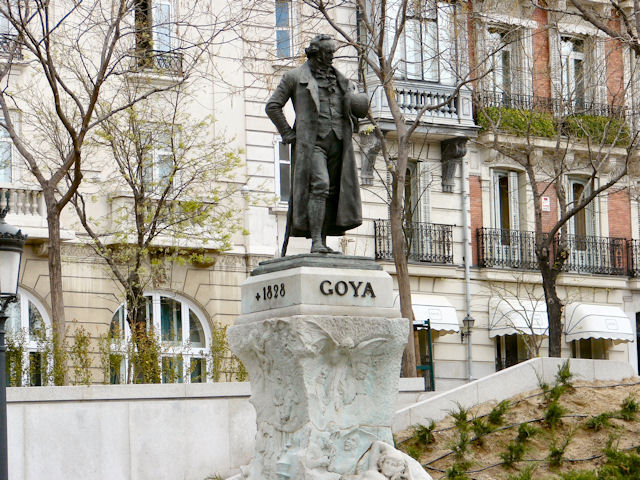
|
When
in Madrid for the first time, the Prado is a mandatory stop. We
were hoping for Goya, but his statue was almost the best we had.
All the major Goya paintings were being prepared (and restored) for
"Goya in the
Times of War," which opened after we left for home. (We did see
Goya's tapestry cartoons, and we did enjoy El Greco and Valázquez.)
|
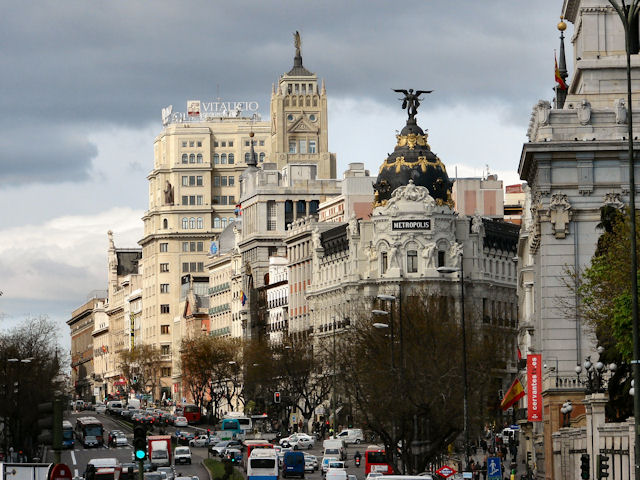
|
Madrid,
with its population of 3½ million, is a big city. It has a
lot of parks, but it also has the other stuff, like congestion and
traffic. This is a view down Calle de Alcala, just past the Bank of Spain.
|
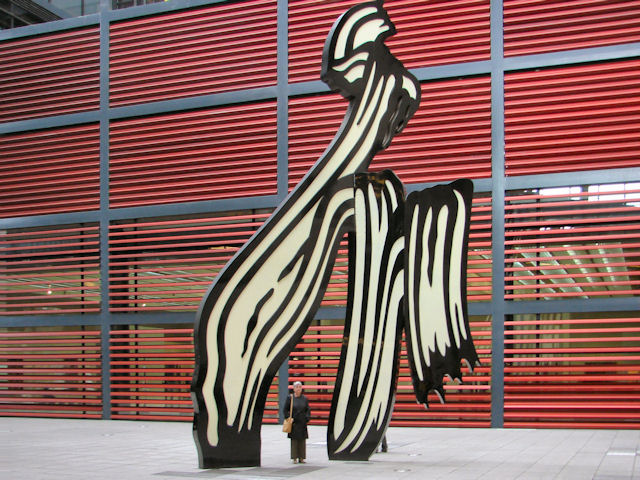
|
Our
preferred museum, so far, is the Reina Sofia, which is called MNCARS for
its full name, El Museo Nacional Centro de Arte Reina Sofía. It has a much richer collection of modern art,
including Picasso's Guernica. Here is Janet in the courtyard with Lichtenstein's Prying Mantis.
|
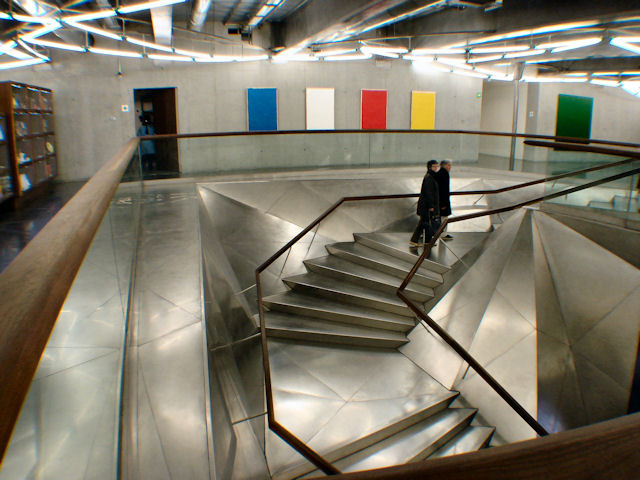
|
The
newest museum, and the most modern, is the Caixa Forum. We were
too "museum-ed out" to pursue it in detail, but its lobby gives an
idea. The Caixa's forecourt is adorned with a vertical garden, 50
or 60 feet tall.
|
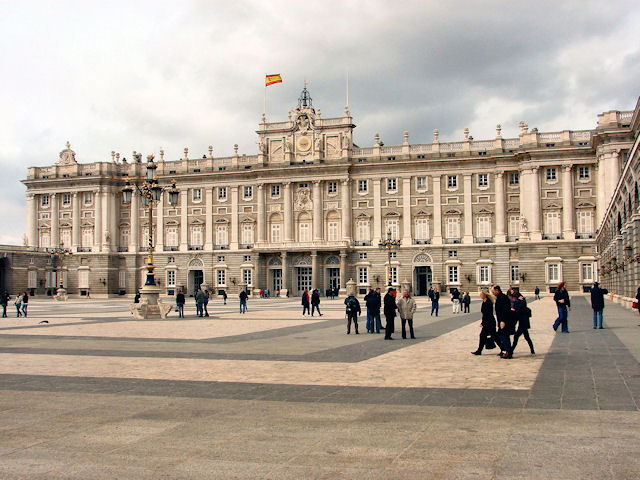
|
The Palacio Real de Madrid is the largest in Europe, but the king and queen have chosen to live in a smaller palace.
|
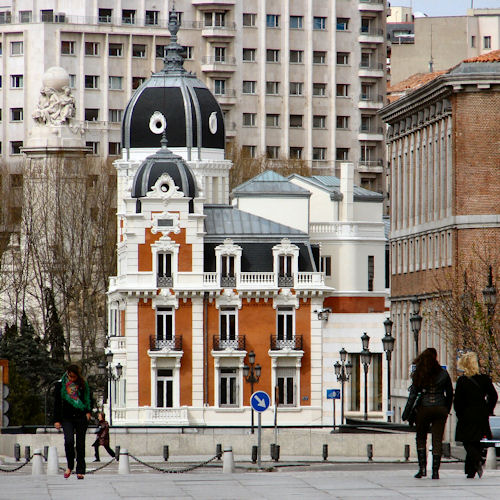
|
This building, very close to the royal palace, remains a mystery to us. We find it interesting as a piece of architecture.
|
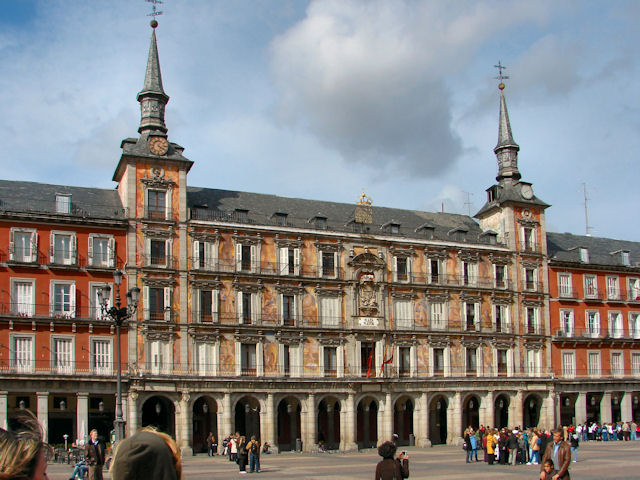
|
The
Plaza Mayor was the site of both bull fights and auto de
fés. It is said that blood stains (from bulls) are still
there. We didn't look.
|
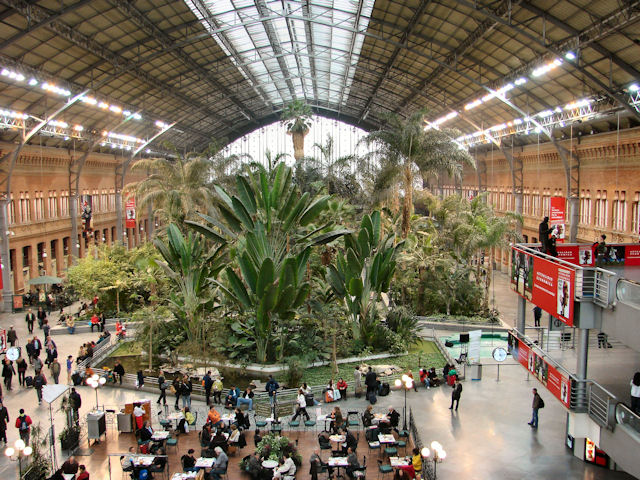
|
This
part of the Atocha railway station was designed by Alberto Palacio y
Ellisague, with assistance from Gustave Eiffel in 1892. A
hundred years later, an
adjoining wing took over for the trains, and the historic wing has
become a garden and mall. The Atocha station was the one bombed
by Al
Qaeda sympathizers in March, 2004.
|
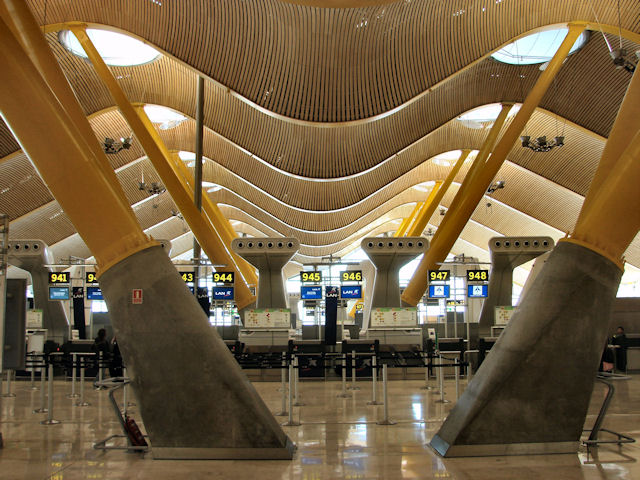
|
Madrid's Barajas Airport has a very modern Terminal 4, which was
designed by Antonio Lamela and Richard Rogers . This terminal has a
satellite, equally modern, but remote enough to have caused us some
trouble.
|
Next stop was Toledo
|
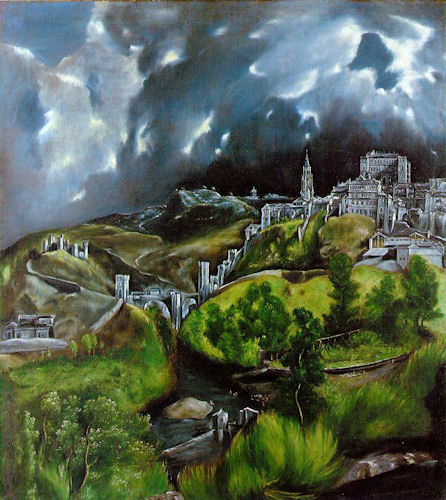
|
This View of Toledo,
which is owned by the Metropolitan Museum of Art, was El Greco's
vision, around 1600. Prominent and to the right of center, are
the Cathedral and the Alcazar.
|
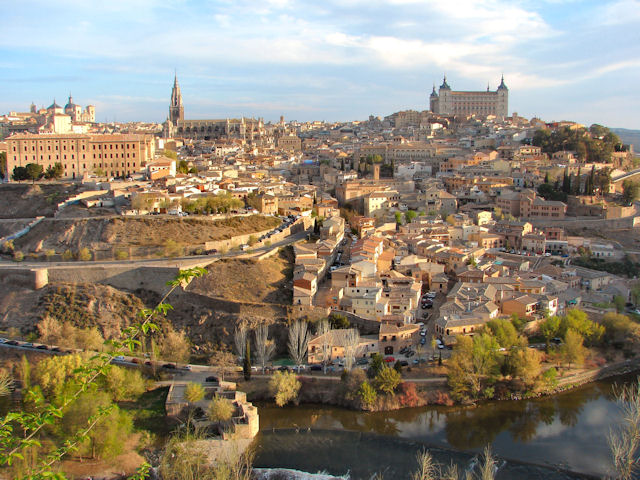
|
Our
View of Toledo, fairly early in the morning, with much better weather
than El Greco had. The Cathedral and the Alcazar are still
prominent. And note the river Tajo, which almost circles
Toledo. This was probably a big reason for its emergence as a
fortified city for the Romans, the Visigoths, the Moors, and finally,
the Catholics.
|
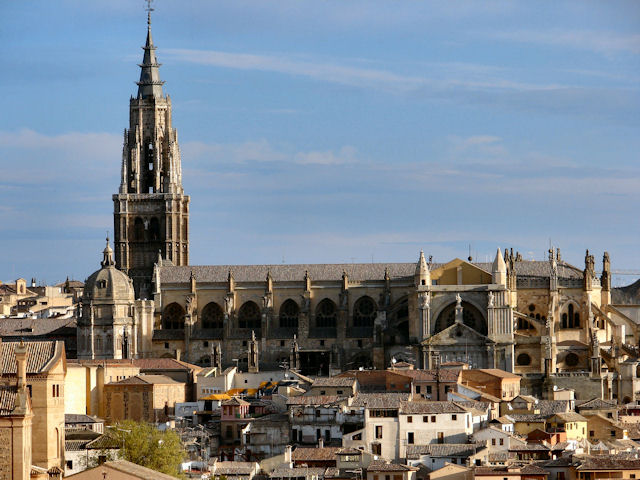
|
The Cathedral of Toledo, seen in relative isolation. Closer views are all obstructed by Toledo's narrow, winding streets.
|
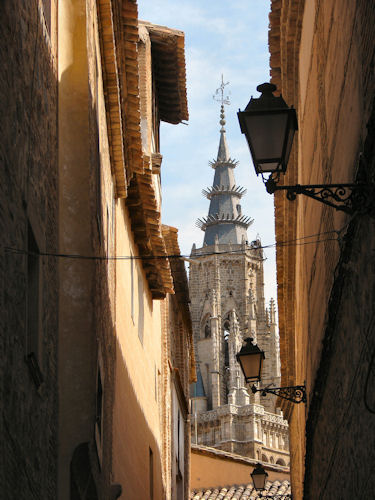
|
The tower of the Cathedral is a useful landmark, but only when you can see it.
|
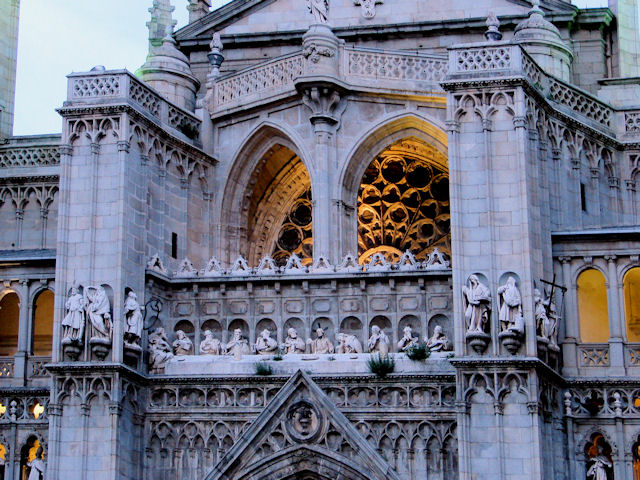
|
Like most of the historical buildings in Toledo, the Cathedral is lighted at night. This is just at dusk, not quite dark.
|
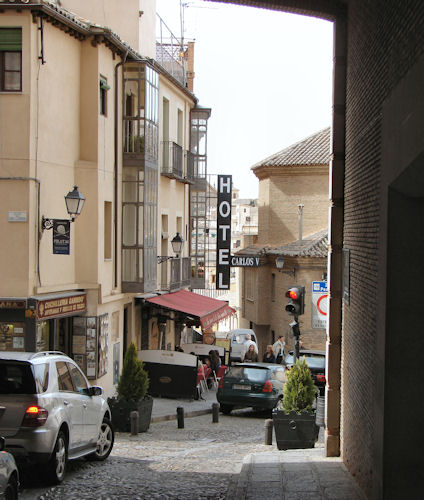
|
Our
hotel was named after Carlos V, King of Spain and Emperor of the Holy
Roman Empire until 1556. The hotel was on a narrow, restricted
street, and our bus always parked some distance away on one of
the few streets in old Toledo where it could pass.
|
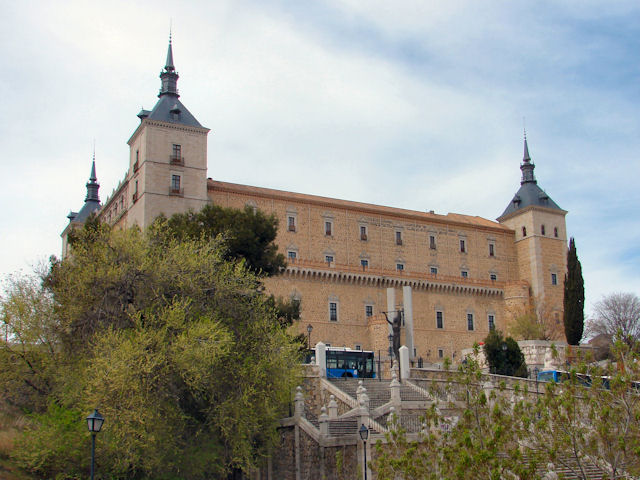
|
The
Alcázar of Toledo. This started as a Roman palace in the
third century, but it present form probably dates to about 1535, when
extensive renovations were done. This was used as a fortress by
Spanish Nationalist (Franco's) forces as recently as 1936, during the
Spanish Civil War. They were under siege by the Republican forces.
|
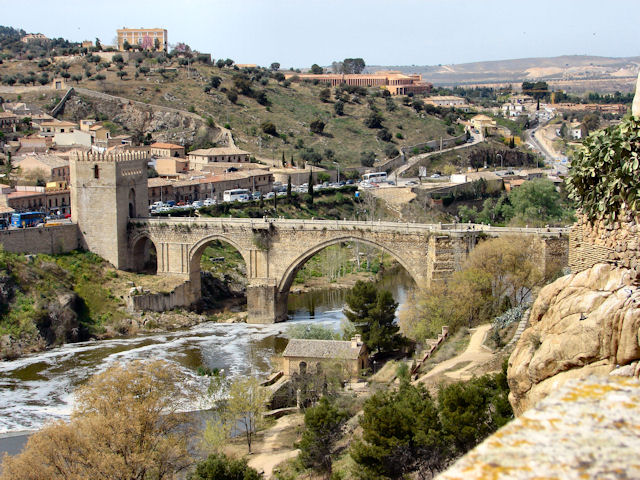
|
The
Puente san Martin crosses the Tajo river, and connects old Toledo to
the suburb of San Martin. This may be the bridge visible in El
Greco's painting, but there is another candidate, the Alcantara bridge.
|
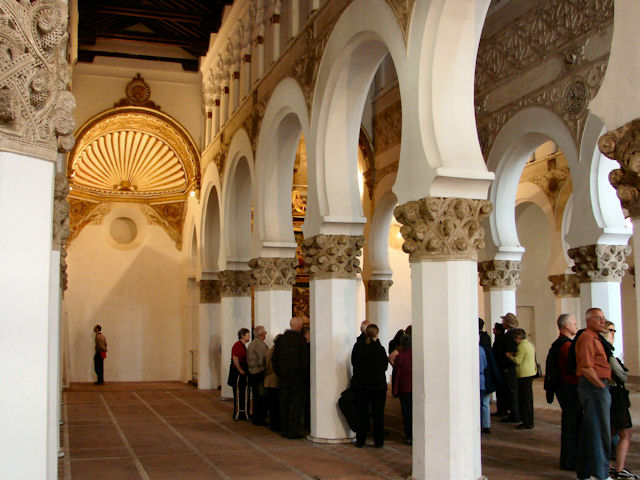
|
Santa
Maria la Blanca is a culturally confusing building. The
architecture is moorish, i. e., Islamic. The name is Christian,
and its function was a synagogue. Go figure.
|
In transit to Granada - Quixote and Olives
|
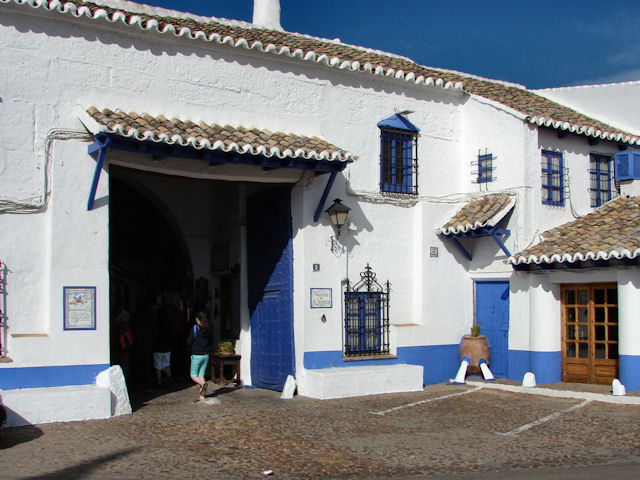
|
The
inn at Puerto Lapice was frequented by Miguel de Cervantes, before he
went to jail. While in jail, he wrote some of Don Quixote's
adventures into this tavern, including his being dubbed a knight.
(Chapter II)
This is in the provence of Castille-La Mancha, which is a region of
castles and windmills. Today, modern windmills fill the
hillsides along with the traditional white cylinders.
|
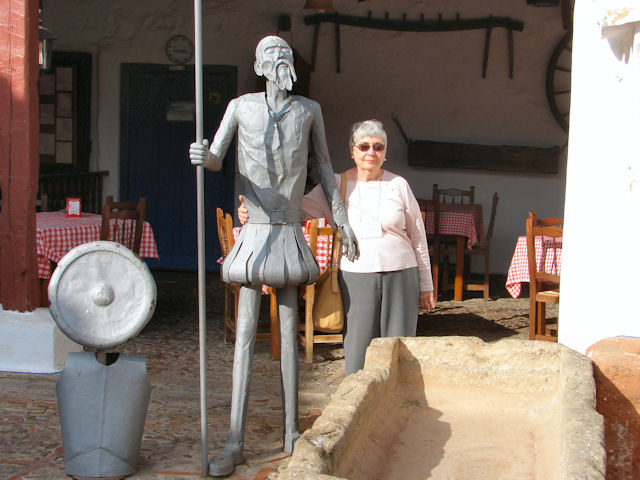
|
No
inn in the novel could pass up a chance to remind us of the connections
with Don Quixote. No tourist should pass on this photo-op.
|
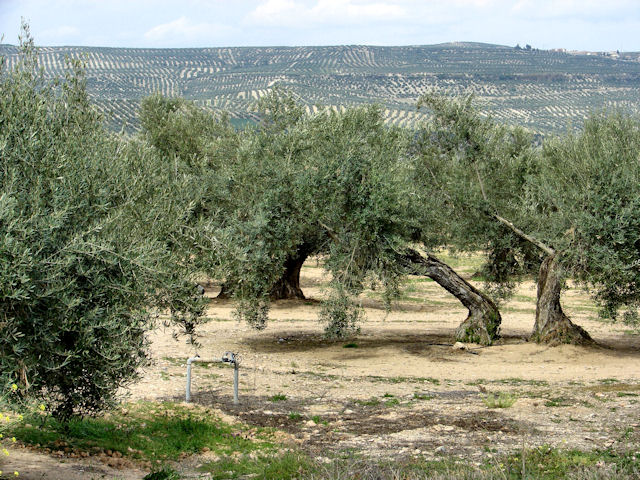
|
For
miles and miles and miles, through the Province of Jaén and approaching the town of Baeza, olive trees
reach from one horizon to the other. For the most part, these
olives end up as olive oil, but we certainly enjoyed a lot of excellent
table olives, too.
|


